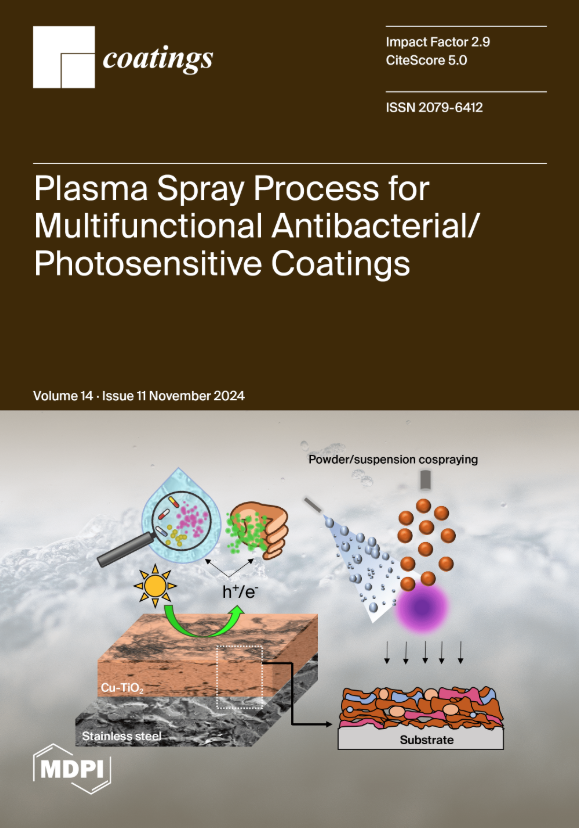工艺参数对激光熔覆温度分布和熔覆层高度影响的数值研究
IF 2.8
3区 材料科学
Q2 MATERIALS SCIENCE, COATINGS & FILMS
引用次数: 0
摘要
为了深入研究激光熔覆过程中工艺参数对温度分布和熔覆层高度的影响,以及这两方面之间的相互作用,我们建立了一个热-流耦合数值模型,考虑了工艺参数(即激光功率和扫描速度)、马兰戈尼效应、熔池动力学和固液转变。数值结果表明,马兰戈尼效应是包覆层增长的主要因素。包层高度随着包层的增长对热传导效率的影响越来越大。更高的激光功率或更低的扫描速度,或两者的结合,会导致更高的包层温度和更大的包层高度。在激光功率为 1750 W 和扫描速度为 4 mm/s 的组合条件下,数值模拟预测的覆层高度为 1.12 mm,与实验测定的高度 1.11 mm 非常接近。此外,综合误差低于 5%,这表明该模型在实际应用中具有相当大的指导价值。本文章由计算机程序翻译,如有差异,请以英文原文为准。
Numerical Investigation of the Effects of Process Parameters on Temperature Distribution and Cladding-Layer Height in Laser Cladding
To delve into the effects of process parameters on temperature distribution and cladding-layer height in laser cladding, as well as the interaction between these two aspects, a thermal–fluid coupling numerical model was established considering process parameters (i.e., laser power and scanning velocity), the Marangoni effect, molten pool dynamics, and solid–liquid transition. The numerical findings indicate that the Marangoni effect is the main factor for the growth of the cladding layer. The cladding-layer height increasingly influences heat-transfer efficiency as it develops. Higher laser power or lower scanning velocity, or a combination of both, can lead to higher cladding temperatures and greater cladding-layer height. Under the combination of laser power of 1750 W and scanning velocity of 4 mm/s, the numerical simulation predicts a cladding-layer height of 1.12 mm, which closely aligns with the experimentally determined height of 1.11 mm. Additionally, the comprehensive error being below 5% demonstrates the model’s considerable instructional value for practical applications.
求助全文
通过发布文献求助,成功后即可免费获取论文全文。
去求助
来源期刊

Coatings
Materials Science-Surfaces, Coatings and Films
CiteScore
5.00
自引率
11.80%
发文量
1657
审稿时长
1.4 months
期刊介绍:
Coatings is an international, peer-reviewed open access journal of coatings and surface engineering. It publishes reviews, research articles, communications and technical notes. Our aim is to encourage scientists to publish their experimental and theoretical results in as much detail as possible. There is no restriction on the length of the papers. Full experimental and/or methodical details must be provided. There are, in addition, unique features of this journal:
* manuscripts regarding research proposals and research ideas will be particularly welcomed
* electronic files or software regarding the full details of the calculation and experimental procedure - if unable to be published in a normal way - can be deposited as supplementary material
 求助内容:
求助内容: 应助结果提醒方式:
应助结果提醒方式:


